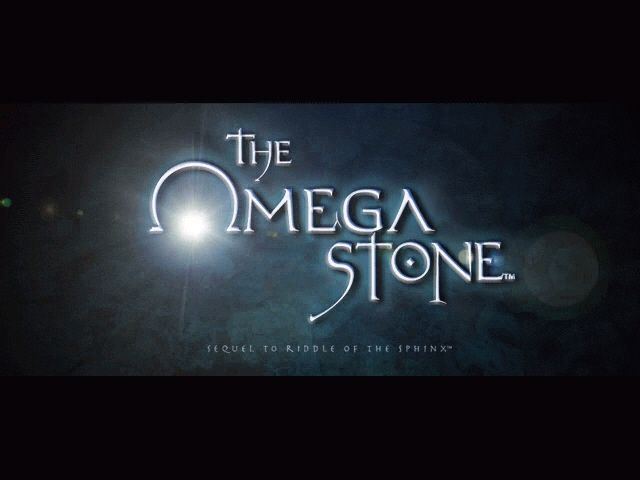Retro Replay Review
Gameplay
The Omega Stone: Riddle of the Sphinx II builds on the solid foundations established in the original Riddle of the Sphinx, offering a first-person, point-and-click adventure that challenges players’ wits at every turn. As you step into the shoes of an intrepid explorer, you’ll revisit the suspense of unraveling ancient mysteries, this time extending the hunt for Sir Geoffreys’s elusive Ark of the Covenant beyond the sands of Egypt. The interface remains intuitive, allowing both series veterans and newcomers to dive right into exploration without a steep learning curve.
Each location you visit—be it the Mayan pyramids of Chichen Itza, the monolithic formations of Stonehenge, the enigmatic statues on Easter Island, or the sunken secrets of Bimini in the Devil’s Triangle—is presented as a richly detailed node. Your journey unfolds through a network of interconnected screens, where every click can reveal hidden switches, secret passages, or cryptic inscriptions. Puzzles range from logic-based contraptions to pattern recognition and environmental riddles, ensuring a varied and engaging experience that rewards patience and observation.
One of the game’s standout features is its atmospheric effects system, which employs simulated rain, wind gusts, and other ambient phenomena to heighten immersion. Whether you’re examining a carved bas-relief in a dimly lit chamber or braving a storm to unlock a door in a windswept ruin, the dynamic weather and lighting cues keep tension high. Coupled with occasional live-action cutscenes that provide narrative context and characterization, the gameplay sequence delivers bursts of cinematic flair between exploration segments.
Progression in The Omega Stone isn’t linear; backtracking with newly acquired keys or deciphered clues often reveals alternative routes and bonus secrets. This non-linear structure encourages players to take notes, make sketches, and think laterally—just as any dedicated puzzle aficionado would. The satisfaction derived from solving a complex sequence of interlocking enigmas is the beating heart of this adventure, and it consistently rises to the challenge of keeping seasoned puzzle hunters engaged for hours on end.
Graphics
Visually, The Omega Stone achieves an impressive level of fidelity for its era through a blend of pre-rendered 3D scenes and still photographic imagery. Each archaeological site feels authentic, with textures that convincingly simulate weathered stone, moss-laden sculptures, and sun-bleached surfaces. The resolution and color palettes vary slightly between locations, but this subtle diversity lends credibility to the notion that each ruin exists in its own climatic and geographic context.
The transition between screens is seamless, as the game uses clever cross-fades and brief animated sequences to mask loading times. In moments of high drama—such as a sudden cave-in or a door slamming shut behind you—small animations overlay the static backdrop to inject movement without breaking away from the core exploration mechanics. These touches keep the visuals from feeling too static, maintaining engagement through both surprise and scenic variety.
Live-action cutscenes featuring actors deliver exposition and narrative beats in crisp full-motion video. Though the production values aren’t Hollywood-level, the performances effectively convey urgency and intrigue, grounding the more esoteric puzzle elements in a human story. The sound design complements the visuals nicely, from distant thunderclaps echoing off stone walls to subtle wind whistles that hint at unseen dangers lurking just out of view.
Story
The narrative of The Omega Stone picks up where Riddle of the Sphinx left off, answering the lingering question of whether Sir Geoffreys truly discovered the fabled Ark of the Covenant. As a curious descendant or colleague—depending on your interpretation—you embark on a world-spanning quest to track his footsteps and unveil the ultimate relic he sought. The premise feels both familiar and refreshingly expansive, shifting the setting from the Nile to global hotspots of ancient lore.
Storytelling unfolds gradually through a combination of environmental clues, journals, and in-game dialogues. You’ll find scraps of parchment in hidden alcoves, annotated maps tucked behind cascading waterfalls, and animated engravings that spring to life when you trigger certain puzzles. This layered approach encourages exploration not only for puzzle progression but also to piece together the larger mythos surrounding Sir Geoffreys and the Omega Stone itself.
Though the core storyline is straightforward—retrieve artifacts, solve puzzles, thwart rival treasure hunters—it’s elevated by moments of genuine mystery. Who was Sir Geoffreys, really? Did he fall victim to his own obsession? And what cosmic or supernatural forces might lie dormant within these legendary sites? By the time you unlock the final chamber, the narrative delivers a satisfying closure while still teasing possibilities for future adventures.
Overall Experience
The Omega Stone: Riddle of the Sphinx II offers a deeply rewarding adventure for puzzle enthusiasts and armchair archaeologists alike. Its combination of intricate brain-teasers, authentic historical settings, and atmospheric presentation coalesce into an experience that feels both educational and thrilling. If you appreciated the methodical pace and cerebral challenges of classic Myst-style adventures, you’ll find this sequel more than lives up to expectations.
While the reliance on pre-rendered backgrounds means you won’t be freely roaming in a 3D engine, the attention to detail in each static frame makes exploration feel like stepping into a richly illustrated storybook. The ambient effects, occasional animations, and full-motion video cutscenes provide just enough motion to avoid monotony, ensuring each new location retains a sense of discovery and wonder.
For players seeking a narrative-driven puzzle romp that traverses some of the world’s most iconic archaeological sites, The Omega Stone stands out as a polished and engaging title. Its demands on your observational skills and patience may deter those looking for action-packed gameplay, but for anyone willing to embrace slow-burn intrigue, the payoff is substantial. In the end, you’ll not only have solved a series of compelling riddles—you’ll have journeyed through history itself, peeling back layers of legend to glimpse the heart of an age-old enigma.
 Retro Replay Retro Replay gaming reviews, news, emulation, geek stuff and more!
Retro Replay Retro Replay gaming reviews, news, emulation, geek stuff and more!









Reviews
There are no reviews yet.